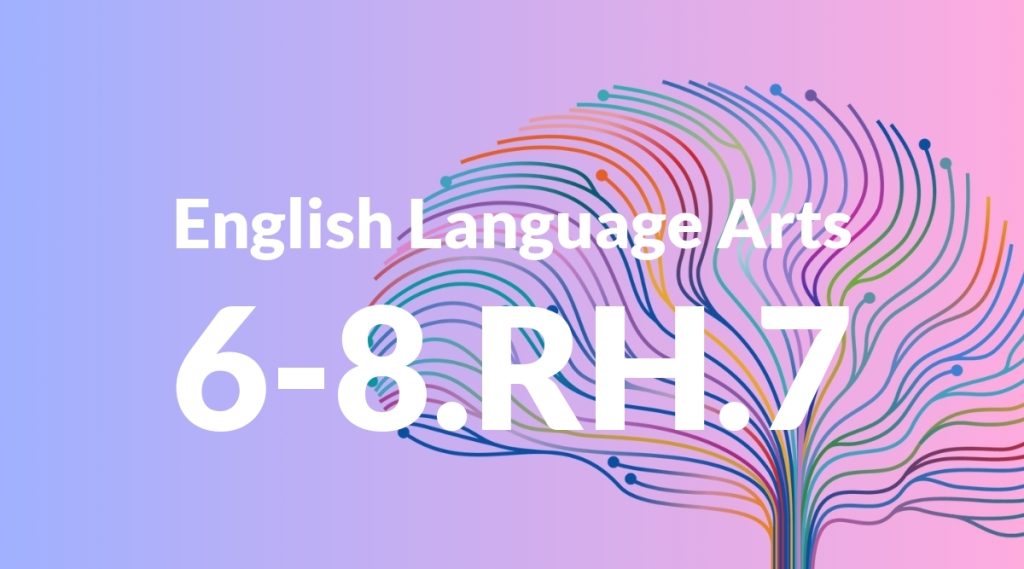Standard: 6-8.RH.7 – Integrate visual information (e.g., in charts, graphs, photographs, videos, or maps) with other information in print and digital texts.
Grade level: Grade 6-8
Subject: English Language Arts
Domain: History/Social Studies
Teacher Overview
This standard emphasizes the importance of integrating visual information with textual information to gain a comprehensive understanding of historical and social studies content. It is crucial for developing critical thinking and analytical skills. Students should be familiar with basic visual aids and have solid reading comprehension skills to effectively integrate visual and textual information.
Students will develop the ability to critically evaluate and synthesize information from various sources, preparing them for more advanced research and analytical tasks.
Common Misconception 1
Some students may think that visual information stands alone and does not need to be contextualized. This is incorrect because visuals are often created to complement and enhance textual information, not replace it.
Intervention 1
Use paired activities where students must read a text and then analyze a related visual aid, discussing how each informs the other.
Common Misconception 2
Another common misconception is that all visual information is inherently accurate and free from bias. This is incorrect because visuals can be manipulated or presented in a way that misleads the viewer.
Intervention 2
Teach students to critically evaluate the source and context of visual information and compare it with other sources to determine its reliability.
Prerequisite Knowledge
Students should have a basic understanding of how to read and interpret visual aids such as charts, graphs, and maps. They should also be comfortable with reading comprehension and identifying key ideas in texts.
Subsequent Knowledge
After mastering this standard, students will be able to critically evaluate and synthesize information from multiple sources, enhancing their ability to conduct research and present well-rounded arguments.
Instructional Activities
- Pairing historical texts with related maps and asking students to discuss the connections
- Having students create their own charts or graphs based on textual data
- Analyzing political cartoons and their accompanying articles
- Using video clips to supplement reading assignments and discussing the differences and similarities in the information presented




